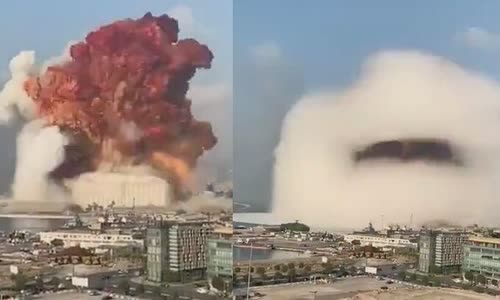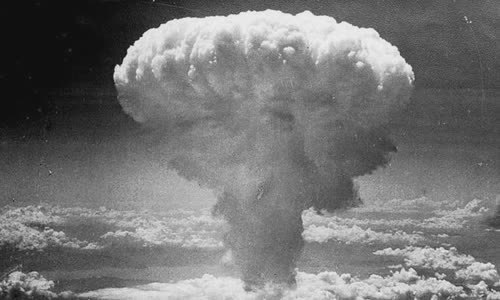A mushroom-shaped cloud appeared after a massive explosion in the harbor of Lebanon's capital Beirut, sparking speculation about a nuclear bomb.
Lebanon's capital Beirut was rocked yesterday by a massive explosion in a warehouse area near the harbor, killing at least 78 people and injuring nearly 4,000, causing damage to many buildings in the city.

Mushroom cloud after explosion in Beirut, Lebanon, August 4 Photo: Twitter/Bissan Campaigns.
Videos posted by witnesses on social media show the harbor terminal burnt earlier, creating a white pillar of smoke rising into the sky.
"May God help us through a disaster, it's like a nuclear bomb," said witness Mamdouh, 25, who lives in Beirut.
Many Twitter users recorded these images and questioned whether the explosion was related to the atomic bomb.
A mushroom cloud also appeared after the atomic bomb explosion in Nagasaki, Japan, on August 9, 1945.
However, experts point out that mushroom-shaped clouds are not characteristic of a nuclear explosion.
Both explosions created a pyrocumulus cloud, also known as a fire cloud, shaped like a mushroom.

Mushroom cloud after the atomic bomb explosion in Nagasaki, Japan, August 9, 1945 Photo: : Wikipedia.
This phenomenon is called the Rayleigh - Taylor instability structure, or the interaction between two liquids or gases of different density when they are pressed together.
This is a modal window.
Beginning of dialog window.
End of dialog window.
Lebanese Prime Minister Hassan Diab also confirmed the explosion caused by 2,750 tons of ammonium nitrate fertilizer stored for years at a warehouse near a harbor in the capital, Beirut, not related to terrorist activities or grain attacks.



 Lilia Soriano Castillo
Lilia Soriano Castillo







